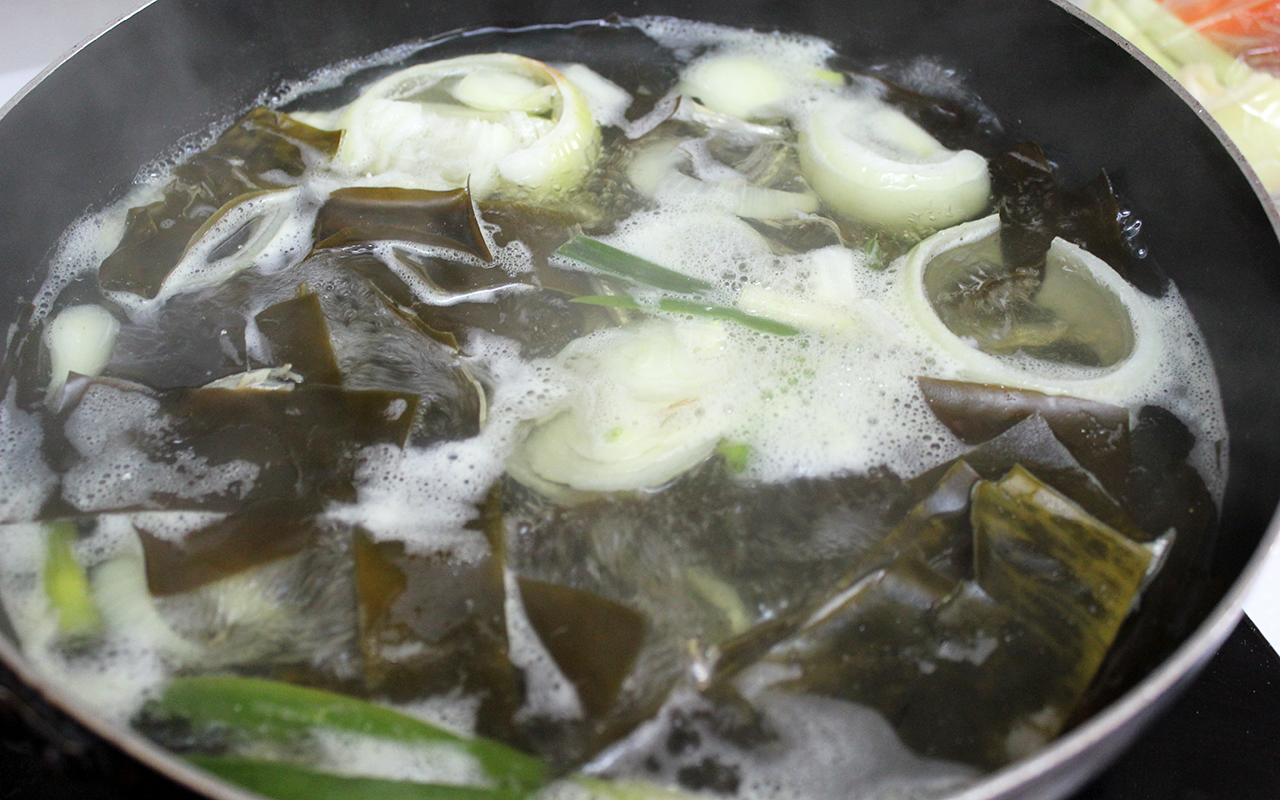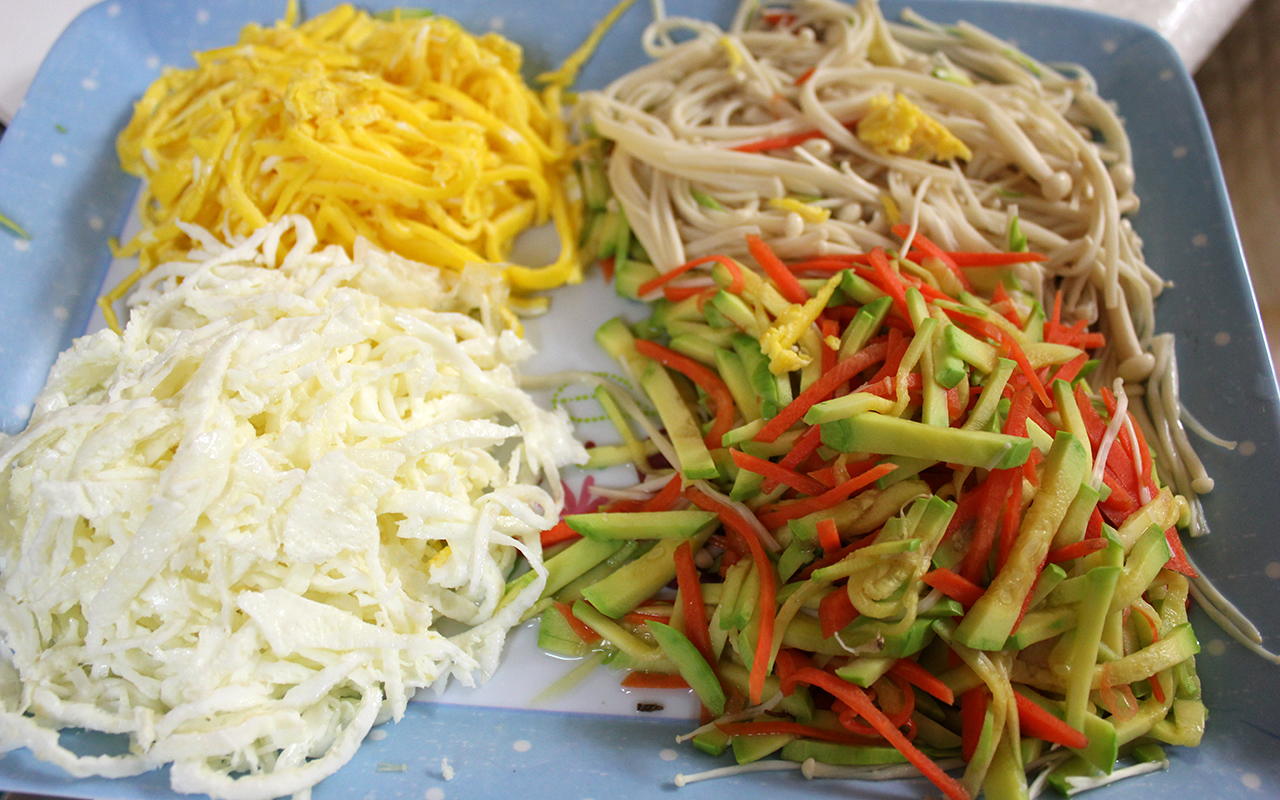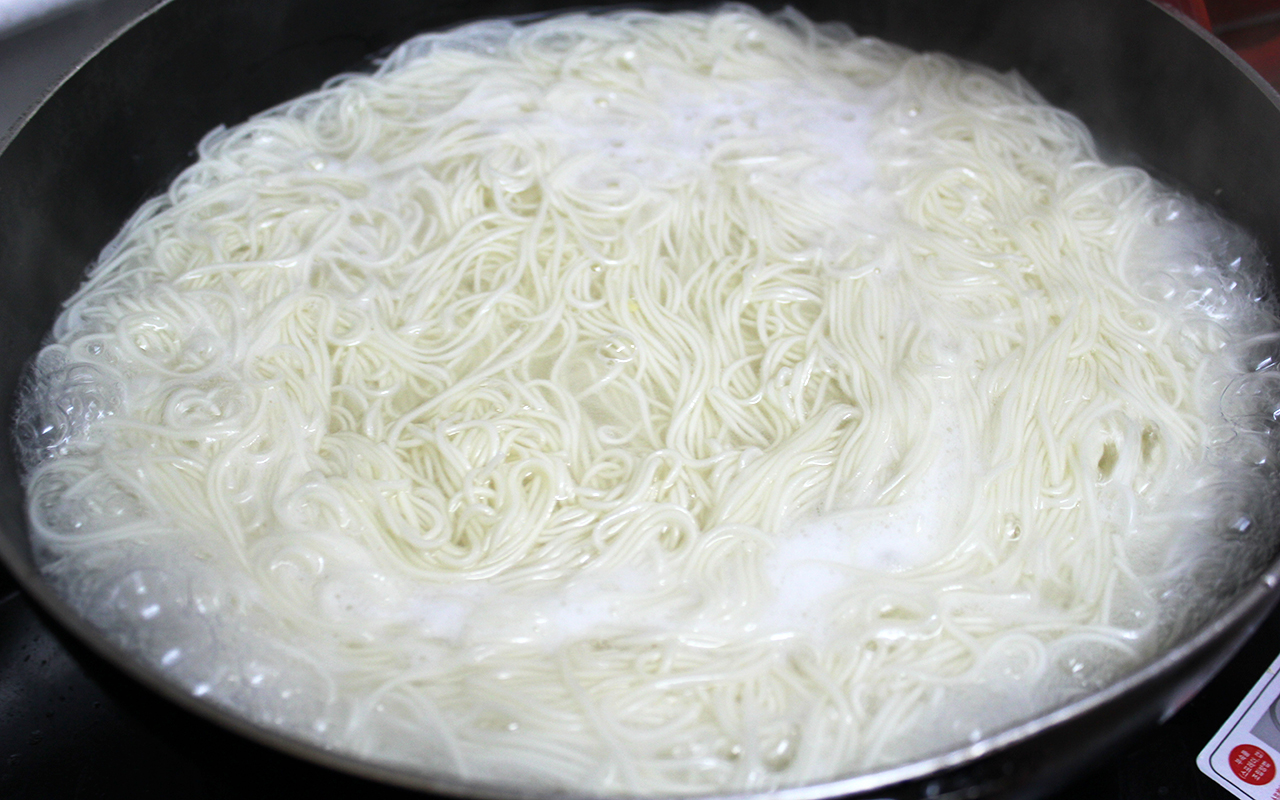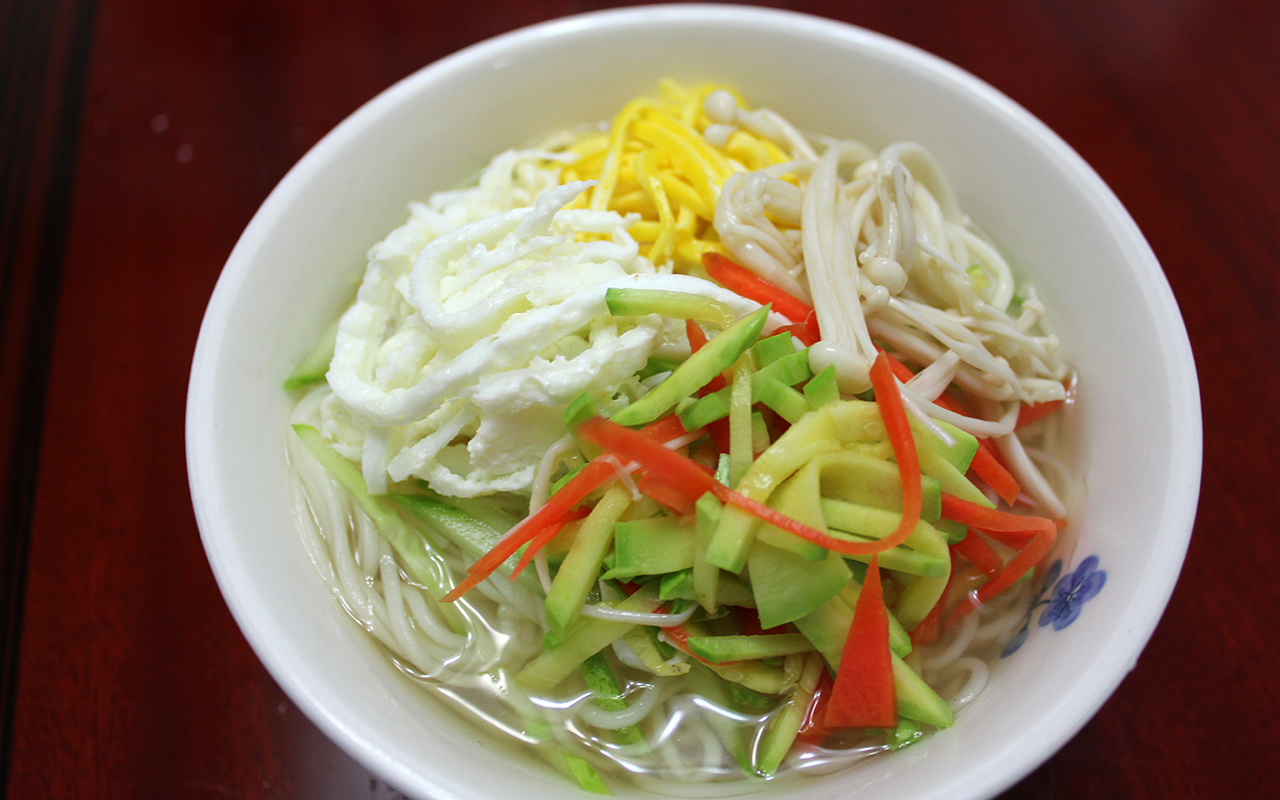Janchi Guksu Recipe
How to make Guksu
Traditionally in Korea, Guksu is quite expensive and rare. It was generally eaten at celebrations such as birthdays, weddings and other events. That is why it’s called ‘Janchi’ which means party or celebration noodles. These days noodles are very cheap so you will see a variety of guksu dishes available all over Korea.
The most important part of making a tasty Janchi Guksu is to get a nice broth with a good flavour.
Making broth
- 1.4 Litre of water
- 1 onion
- 1 Radish if you have
- Handful of Kelp
- 4-5 large anchovies (soup/broth ones if you can find)
- 1 Leek
- 1 Tablespoon of Soy sauce
To start, put 1.4 litres of water in a large saucepan, and add in 1 onion cut
in half, radish and leek cut into large chunks and if you can get, add in a
handful of kelp and anchovies.
Boil them all together in a pot for 30mins to 1
hour and season it with 1Tbs of soy sauce depending on your taste. Leave it to
cool for later.
Preparing vegetables
- 1 Carrot
- ½ Courgette
- 1 Pack of Enoki mushroom or any other mushrooms you have
- 2 eggs separated yolk and white
Slice all of vegetables and fry them in a frying pan and season lightly with salt.
For eggs, beat the separates in different bowls and then fry them in the pan (like an omelette). Once finished place on a plate and slice them like the picture below.
 |
 |
Making Sauce
- 3 Tablespoon of Soy sauce
- 1 Tablespoon of Red pepper powder
- 1 Tablespoon of sugar or honey
- 1 Sesame oil
- 1 Tablespoon of chopped or minced garlic
- 1 chopped spring onion
- 1 small chopped red pepper or chilli
Put all of the above in a small bowl and mix it together.
Boiling Guksu
Separately from the broth, boil the noodles in water for 4-6mins. You can add some cold water for a couple of times avoiding overflowing. Try to avoid over cooking the noodles, you want them to be firm not soft.
When cooked, drain all the water away in a sieve and rinse them with cold water this will help to make them chewier and more elastic.
Ready to serve
Once you have all the components ready, you can bring the dish together.
Remove the onion, radish, anchovies and kelp from the broth, so you are left with just the soup. Bring the broth back to boil and put the noodles in bowls ready to serve.
When the broth is hot, pour some in each bowl, and then add the vegetables on top. Finish with a teaspoon (or more if you like) of the sauce.
 |
 |
My mum always makes Janchi Guksu alongside of Bibim Guksu which she makes with spicy sauce, kimchi or Yeolmu kimchi and sliced cucumber on top. I will be uploading this recipe next week.
Return to Korean noodles recipes
New! Comments
Have your say about what you just read! Leave me a comment in the box below.